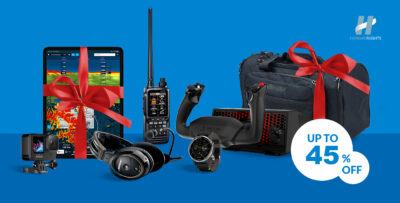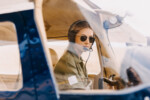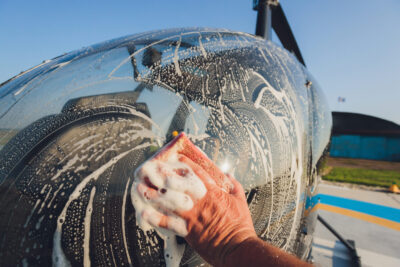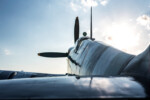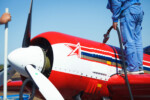Aircraft Cleaning: Can You Use Car Wax on Aircraft?
7 November 2023 | Updated on February 05, 2024
When it comes to aircraft cleaning, many aviation enthusiasts wonder if they can use car wax on airplanes. After all, car wax is designed to protect and enhance the exterior of automobiles, so it seems like a logical solution for aircraft maintenance. In this article, we will explore the facts and guidelines for using wax on airplanes and how to properly protect your aircraft’s exterior.
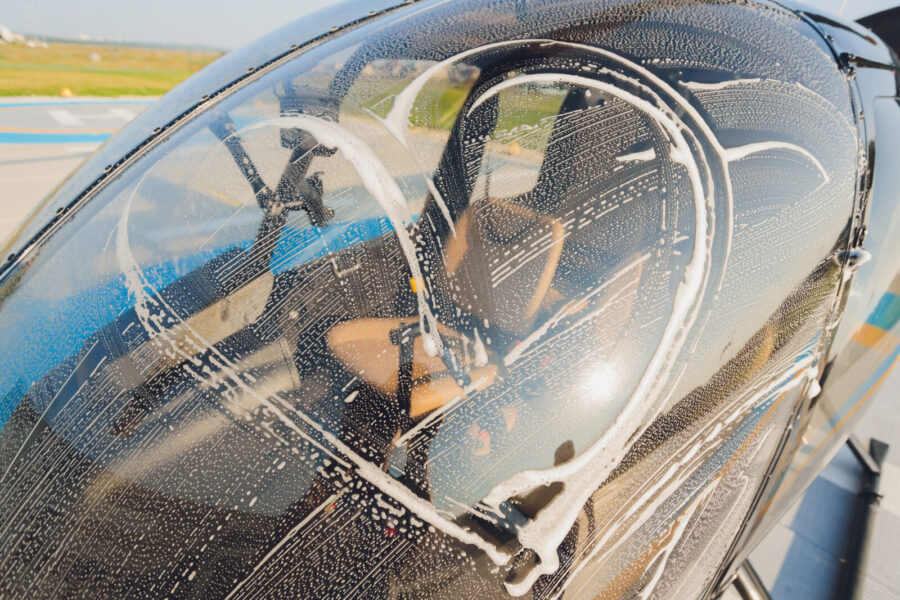
Important Disclaimer: The information and data provided here are for informational purposes only, and are subject to change over time. We strive to provide the most current and relevant information, but the dynamic nature of the topics discussed may result in changes that are not immediately reflected in our content. We recommend our readers to conduct their own research and consult with professionals when making significant decisions based on the data or information provided here. Your reliance on the information in this post is solely at your own risk.
Key Takeaways:
- Using car wax on airplanes requires careful consideration and knowledge of aircraft maintenance.
- Choosing products specifically designed for aircraft will help prevent potential damage.
- Understanding the differences between polishing, waxing, and sealing is essential for proper aircraft maintenance.
- Following best practices for aircraft detailing ensures optimal cleaning and protection.
- Regular detailing, both on the exterior and interior, helps maintain the aircraft’s appearance and performance.
Using Car Wax on Aircraft: Factors to Consider
When it comes to maintaining aircraft, factors such as safety, durability, and paint preservation are of utmost importance. This raises the question of whether car wax can be used on airplanes. While car wax may provide a temporary shine, it is essential to consider several factors before using it on an aircraft.
First and foremost, aircraft maintenance plays a crucial role in ensuring safe and efficient operation. The use of products specifically designed for aircraft is recommended to prevent potential damage. These specialized products are formulated to meet the unique requirements of aircraft surfaces, taking into account factors such as the type of paint and the surface of the airplane.
Additionally, the desired level of protection should be taken into consideration. While car wax may offer some level of protection, it may not provide the long-lasting endurance required for aircraft surfaces. Factors such as water resistance, UV protection, and corrosion prevention are vital when choosing products for aircraft cleaning and maintenance.
Using Car Wax on Aircraft: Factors to Consider
In summary, using car wax on airplanes requires careful consideration. When it comes to aircraft maintenance and paint preservation, it is recommended to opt for specialized products designed specifically for aircraft. These products offer enhanced protection and durability, ensuring the longevity and safety of the aircraft. By prioritizing the unique requirements of aircraft surfaces and selecting the right products, aircraft owners and operators can effectively maintain the exterior of their aircraft.
Table: Comparison of Car Wax and Aircraft-Specific Products
| Factors | Car Wax | Aircraft-Specific Products |
|---|---|---|
| Surface Compatibility | May not be compatible with all aircraft surfaces | Specifically formulated for aircraft surfaces |
| Protection | Provides temporary shine and limited protection | Offers enhanced protection against water, UV rays, and corrosion |
| Durability | May not provide long-lasting endurance on aircraft exteriors | Designed for long-lasting durability in aviation environments |
Source: Own research
Polishing, Waxing, and Sealing Aircraft: Key Differences
Proper aircraft detailing involves several important steps, including polishing, waxing, and sealing. Each of these processes serves a distinct purpose in maintaining and protecting the aircraft’s exterior. It is crucial to understand the differences between these steps to ensure effective aircraft maintenance.
Polishing is the initial step in aircraft detailing and focuses on restoring the surface to its original shine and removing any imperfections. It involves the use of abrasive compounds to smooth out scratches, oxidation, and other damage. Polishing helps improve the paint’s appearance and prepares it for the next step.
Once the surface is polished, waxing is applied to protect the paint and maintain its shine. Aircraft wax creates a barrier that shields the paint from the harsh elements, such as UV rays, pollution, and dirt. It helps prevent fading, corrosion, and other deterioration. Additionally, waxing also provides a smooth and glossy finish, further enhancing the aircraft’s appearance.
In contrast, sealing goes beyond the protection offered by waxing. Aircraft sealants are specifically designed to provide long-lasting and durable protection against environmental factors. They create a robust barrier that seals the paint, preventing water damage, corrosion, and fading caused by exposure to sunlight. Sealants offer enhanced durability, often lasting longer than traditional waxes, making them ideal for aircraft exposed to harsh conditions.
Overall, understanding the differences between polishing, waxing, and sealing is vital for effective aircraft maintenance. Each step plays a crucial role in protecting the aircraft’s exterior and ensuring its longevity and appearance. It is recommended to consult with aircraft detailing professionals to determine the best products and techniques suited for your specific aircraft.
Best Practices for Aircraft Detailing
Proper aircraft detailing is crucial for maintaining the aesthetics, performance, and value of your aircraft. It involves both exterior and interior cleaning and requires adherence to best practices. Here are some key guidelines to follow when performing aircraft detailing:
- Use specialized cleaning products: When cleaning the exterior of the aircraft, it is important to use cleaning products specifically designed for aircraft surfaces. These products are formulated to effectively remove dirt, grime, and stains without causing any damage.
- Follow the correct washing technique: To avoid damage to the airframe, it is essential to wash the aircraft using the correct technique. Start by rinsing the aircraft with water to remove loose debris, then use a gentle, non-abrasive cleaning solution and a soft sponge or cloth to wash the surface. Rinse thoroughly and dry using a microfiber towel.
- Employ proper waxing techniques: Waxing helps protect the paint and achieve a high shine. Apply a high-quality aircraft wax using a clean, soft cloth or applicator pad. Follow the manufacturer’s instructions for application and removal, ensuring even coverage and buffing to a shine.
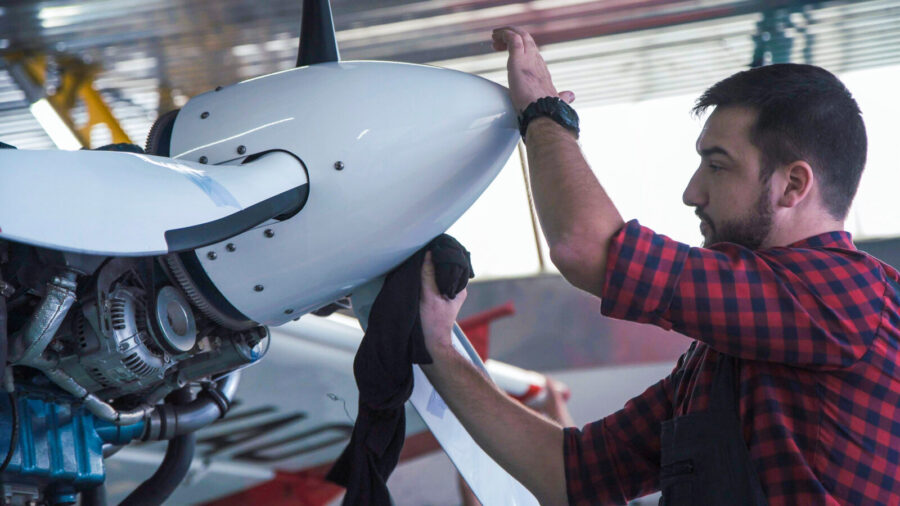
When it comes to interior detailing, cleanliness and sanitization are of utmost importance. Follow these best practices for interior cleaning:
- Remove all debris and clutter: Start by removing any trash, personal items, and debris from the interior of the aircraft. This includes emptying trash bins, vacuuming or sweeping the floors, and wiping down any surfaces.
- Clean and disinfect surfaces: Use appropriate cleaning products to clean and disinfect various surfaces inside the aircraft. Pay special attention to high-touch areas such as armrests, tray tables, seat belts, and lavatories. Follow the manufacturer’s instructions for the cleaning products to ensure proper effectiveness.
- Keep upholstery and carpets clean: Regularly vacuum upholstery and carpets to remove dust, dirt, and debris. Use fabric cleaners and spot treatments as needed to remove stains and maintain the appearance of the interior surfaces.
By following these best practices for aircraft detailing, you can ensure that your aircraft remains in optimal condition, both inside and out. Regular maintenance and attention to detail will help preserve the aircraft’s beauty, protect its surfaces, and contribute to a safe and enjoyable flying experience.
| Exterior Detailing | Interior Detailing |
|---|---|
| Use specialized cleaning products | Remove all debris and clutter |
| Follow correct washing technique | Clean and disinfect surfaces |
| Employ proper waxing techniques | Keep upholstery and carpets clean |
Quote:
“Proper aircraft detailing is essential for maintaining the beauty and value of your aircraft. Following best practices and using specialized products will help protect the exterior and interior surfaces.”
Conclusion
Ensuring optimal cleaning and maintenance of your aircraft is crucial for its longevity and safety. While car wax may not be suitable for airplanes, there are specialized products designed specifically for aircraft detailing. By choosing reputable detailing professionals who follow industry best practices, you can guarantee that your aircraft receives the utmost care and protection.
Regular detailing, both on the exterior and interior, will not only enhance the aircraft’s appearance but also contribute to its overall performance and value. Exterior detailing involves proper washing techniques using specialized products to avoid any damage to the airframe. Additionally, employing appropriate waxing methods will protect the paint and achieve a stunning shine.
Interior detailing focuses on cleanliness and sanitization, ensuring that all surfaces are thoroughly cleaned and disinfected. It is essential to carefully select cleaning products to avoid any potential harm to the aircraft. By adhering to these best practices, you can maintain the pristine condition of your aircraft and enjoy the peace of mind that comes with a well-maintained and protected investment.
FAQ
Can car wax be used on aircraft?
While car wax may provide temporary shine, it is important to choose products specifically designed for aircraft to prevent potential damage.
What are the factors to consider when using car wax on airplanes?
Factors to consider include aircraft maintenance, the type of paint and surface of the airplane, and the desired level of protection.
What are the key differences between polishing, waxing, and sealing aircraft?
Polishing focuses on removing damage and imperfections, waxing helps preserve the shine and protect against fading, and sealants provide long-lasting protection against environmental elements.
What are the best practices for aircraft detailing?
Best practices include proper washing techniques, using specialized products, employing proper waxing techniques, and carefully choosing cleaning products for interior detailing.
Why is regular aircraft detailing important?
Regular detailing helps maintain the aircraft’s appearance, performance, and value, as well as ensure longevity and safety.
Where can I find reputable detailing professionals for my aircraft?
It is recommended to choose reputable detailing professionals who adhere to industry best practices for optimal cleaning and protection for your aircraft.
Source Links
- https://www.autogeekonline.net/forum/auto-detailing-101-a/32628-aircraft-cleaning-automotive-products.html
- https://www.brightworkpolish.com/whats-the-difference-between-airplane-polish-wax-and-sealant/
- https://www.detailxperts.net/blog/2020/05/25/airplane-detailing-what-you-should-know-before-hiring-detailer-for-your-plane/








